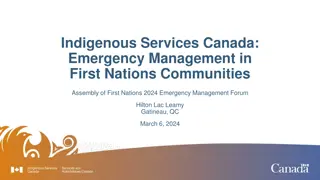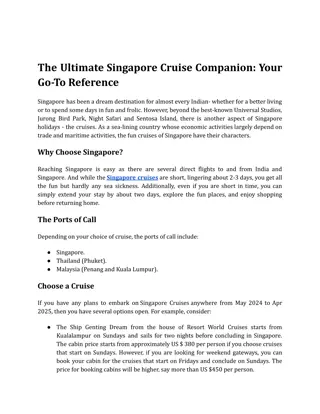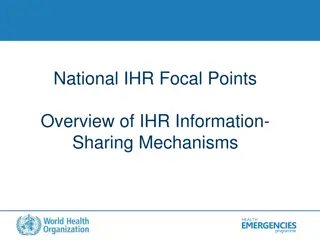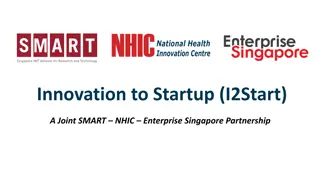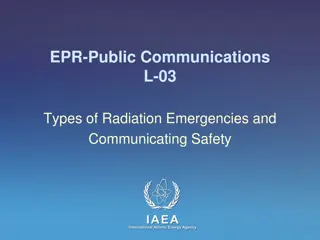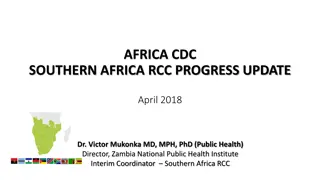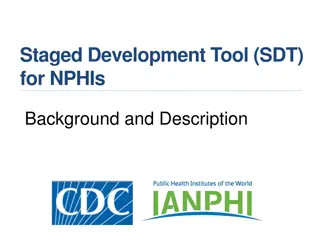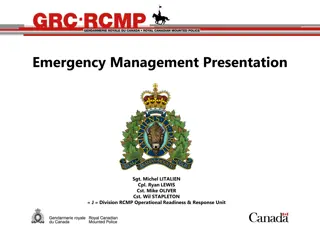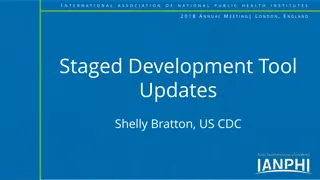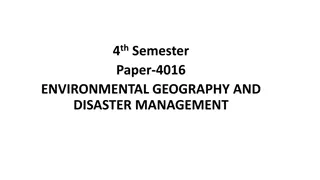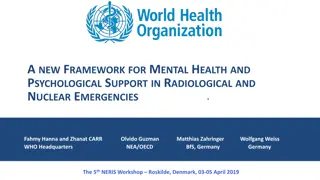
Singapore's Health Emergency Preparedness Insight
Explore the detailed overview of Singapore's preparedness and response to health emergencies, including past outbreaks and future pandemic threats. Learn about the key challenges faced by Singapore and the strategies implemented to enhance public health readiness.
Download Presentation

Please find below an Image/Link to download the presentation.
The content on the website is provided AS IS for your information and personal use only. It may not be sold, licensed, or shared on other websites without obtaining consent from the author. If you encounter any issues during the download, it is possible that the publisher has removed the file from their server.
You are allowed to download the files provided on this website for personal or commercial use, subject to the condition that they are used lawfully. All files are the property of their respective owners.
The content on the website is provided AS IS for your information and personal use only. It may not be sold, licensed, or shared on other websites without obtaining consent from the author.
E N D
Presentation Transcript
Preparedness and Response to Health Emergencies in Singapore Professor Vernon Lee Executive Director, interim Communicable Diseases Agency, Singapore 9 September 2024
Threat of frequent and concurrent outbreaks 1995 2000 2005 2010 2015 2020 Legend COVID-1G 2020 : Contained outbreak : Ongoing spread in SG : Ongoing spread overseas (possible import into SG) Mpox 2019 2020: New mode of spread 2 2 % annual risk of COVID-like pandemic animal to human transmission incidents of EIDs per year Measles 2018: Global resurgence 2019: Spillover to Singapore Local Zika 2016 2022 Influenza Pandemic (H1N1) 2009 SARS 2003 Nipah Virus 1998: Malaysia/Singapore outbreak 2001 to present: Sporadic outbreaks in India, Bangladesh. No import to Singapore. Polio 2019 2019 2021: Philippines 2022: Israel, US, UK, Indonesia | 2015: S. Korea MERS 2012 Overseas | | | Severe fever with thrombocytopenia syndrome (SFTS) 2009: Discovered in China, now with increasing geographical spread | 2012/3: S. Korea, Japan 2017: Vietnam 2019: Taiwan | Avian Influenza 1996: H5N1 emerges in China, HK H7N9 in China H5N1 in the region (Vietnam, Thailand, China, Cambodia) Ebola 1994 2013 2016: W. Africa, cases exported to USA, UK, Spain, Italy 2018 2020: DRC and Uganda Sporadic, limited outbreaks in endemic African countries
2022: Mpox global outbreak Cases detected in SG 2016 MDR-TB cluster Mass screening conducted for residents of Blk 203 AMK Ave 3 Singapore has weathered various challenges over the years 2015 Group B Strep outbreak >300 affected, 2 deaths 2020-2023: COVID-19 pandemic 2014: West Africa Ebola 2016 Zika global outbreak 455 cases in SG between 27 Aug and 30 Nov 2016. Multiple dengue and chikungunya outbreaks Large dengue outbreaks in 2004, 2007, 2013, 2019-2020 Chikungunya outbreaks : 2008, 2013 2015 MERS Outbreak Large outbreak in ROK, major transport hub to Singapore 2009 Influenza A(H1N1) pandemic 2003: SARS global outbreak Mar May 2003: 238 cases, 33 deaths in SG
Next pandemic: A matter of When not If Threat of pandemics and outbreaks persist need to be ready for Disease X Endemic infectious diseases need to be well managed Critical to maintain our ability to rapidly and effectively respond to peacetime and crisis threats. CDA to be established to focus on: Better integration and coordination of public health functions to improve command, control and coordination Activating rapid surge capacity in pandemics Building up strong public health expertise and organisational capacity
Consolidating public health functions in CDA Consolidate Public Health Functions Bolster Readiness for Disease X Operations of CD Policies National Public Health Laboratory Research Public Health Training s Education Policy development for Prevention, Preparedness and Response Surveillance and Outbreak Response Data Analytics Global Intelligence Public Education on CD National Immunisation Registry Autonomous government agency established by an Act End-to-end public health functions from policy to operations, closely working with clinical services at NCID Accountable to MOH and its Board, depending on subject matter
CDAs strategic priorities Reinforce Evidence- based Policy and Decision- Making Processes Build Shared Identity and Foster Sense of Belonging Take on More Prominent Role in Local Health and Whole-of-Govt Ecosystem Build Robust and Effective Organisational Structures and Processes Bolster Preparedness, Readiness and Response for ID threats Forge Robust Regional and International Partnerships Attract, Train, and Sustain a Capable Workforce
CDAs key functions Policy s Ops National ID policy Prevention, preparedness, readiness and response WOG PH Coordination Public health lab capabilities Data science analytics AMR C One Health Field training C public education Research National research on ID and PH for policy making Programme of Research for Epidemic Preparedness and Response (PREPARE) Catalysing Public Health (PH) Responses Outbreak Management s Control National capacities for EIDs Clinical guidance Surveillance Disease control programmes Global Engagements Exchange of expertise and intel Network of like-minded Capacity building Bilateral and multilateral
Singapores public health ecosystem Public Health Entities Clinical s Hospital cal H s Services One Health
Working together in peacetime and crisis NATIONAL CRISIS PREPAREDNESS AND MANAGEMENT FRAMEWORK Whole-of-government planning and coordination Assessment, evaluation and capacity building National legislation, policy and financing
Plug-and-play modular pandemic preparedness approach Disease X and other future pandemic threats may not adhere to characteristics of current known diseases Current disease-centric plans are tailored to respond to known diseases; application to novel outbreaks may be limited A modular approach would allow us to respond nimbly to evolving knowledge of new threats and known threats with customised measures and plans
Building transmission-based plans using modules Disease-agnostic modules can be selected and used for various diseases of the 5 major transmission modes, to form transmission-based plans For instance, modules are selected for their effectiveness against droplet-borne diseases Together, this set of selected modules forms a droplet-borne disease plan
Whole-of government, whole-of society approach towards pandemic preparedness planning Overarching strategy Intent Risk Assessment Risk Reduction PROTECTING LIVES AND LIVELIHOODS Impact Mitigation Detection, Surveillance s Sense- making Overseas Scanning Local Testing and Surveillance Predictive Modelling Pharmaceutical Intervention Containment s Community Measures PoE Activities Systems Healthcare Provision Horizon Entry Requirements Overseas Measures Immediate Post Entry Requirements Vaccination Therapeutics Public Measures Environmental Measures Contact tracing and management Health Case Management Care Model Infection Prevention and Control Healthcare Resource Management Travel Tools Rallying the Community Partnering the Private Sector International Engagements Legislation WOG Coordination Communications Enablers Research Finance/Fiscal Policies Technology Resources Environmental/Social Planning Risk Communication s Community Engagement Communication strategies in a pandemic response towards objectives such as: (1) clear and transparent public communications, (2) address misinformation, (3) promote preventive behaviours, (4) deepen engagements with stakeholders and (5) maintain public confidence and trust in MOH and healthcare system/services


